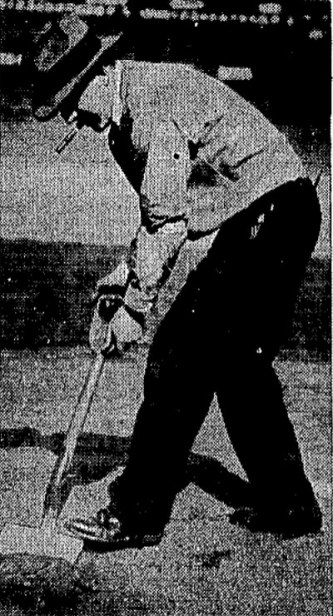 When I write my long-promised Top 10 list of World Series weather games, the 1925 championship finale will certainly rank high on the chart.
When I write my long-promised Top 10 list of World Series weather games, the 1925 championship finale will certainly rank high on the chart.
It had almost all the makings of a fall weather classic: pounding rain, vision-obstructing fog, ballplayers’ mud-caked habiliments and thousands of rain-drenched foul-weather fans, so to speak. ‘You could cut the mirk with a cleaver,” The Evening Star of Washington, D.C., reported on the gloomy mid-October afternoon in Pittsburgh.
Game 7 also had a fire on the field, a blaze intentionally set by Forbes Field groundskeeper Jack Fogarty in an attempt to dry the uliginous infield. There’s no report, however, of fans roasting marshmallows.
This nutty game, in which the Pirates bested the Senators 9-7, also produced one irritated journalist.
Among the many World Series recap stories The Sporting News published in its Oct. 22 issue, Joe Vila held no punches in expressing his displeasure over the treatment of writers at the ballpark.
“I do not know who was directly responsible for the press accommodations at Forbes Field, but it’s enough to say that they were outrageous,” wrote Vila, who covered baseball for three decades.
“The press box, instead of being located in the grand stand, under cover, was arranged on the ground in front of the ordinary backstop. Reporters and telegraph operators, who had no redress, worked on Tuesday and Thursday in the mud and rain. They had no protection from the storm and were drenched to the skin.
From Vila’s writing, it’s as clear as mud to determine whether he was actually dodging raindrops and slogging through mud at Forbes Field or if he simply was piping up for those writers who were covering the game.
Under the sub-headline of “Press Handled Like Bleacherites,” Vila continued his salty assault, writing, “If the Pittsburgh Club had entertained the proper respect for the newspapers which spent many thousands of dollars to spread to spread the details of the World Series all over the United States and other parts of the civilized world, such uncomfortable conditions under which the writers and keymen tolled would not have existed.”
Digging through various other newspapers has not revealed, so far, any other scribes complaining about improper working conditions at the ballpark.
Ralph Davis wrote in the Pittsburgh Press that he “leaped” from his seat in the “press box at Forbes Field” at the end of the game, not because his pants were soaked, but from the sight of “Old Rube” Oldham firing the third strike past the Senators’ Goose Goslin, who was “standing there flatfooted, for the final out of the game of the world’s baseball series.”

